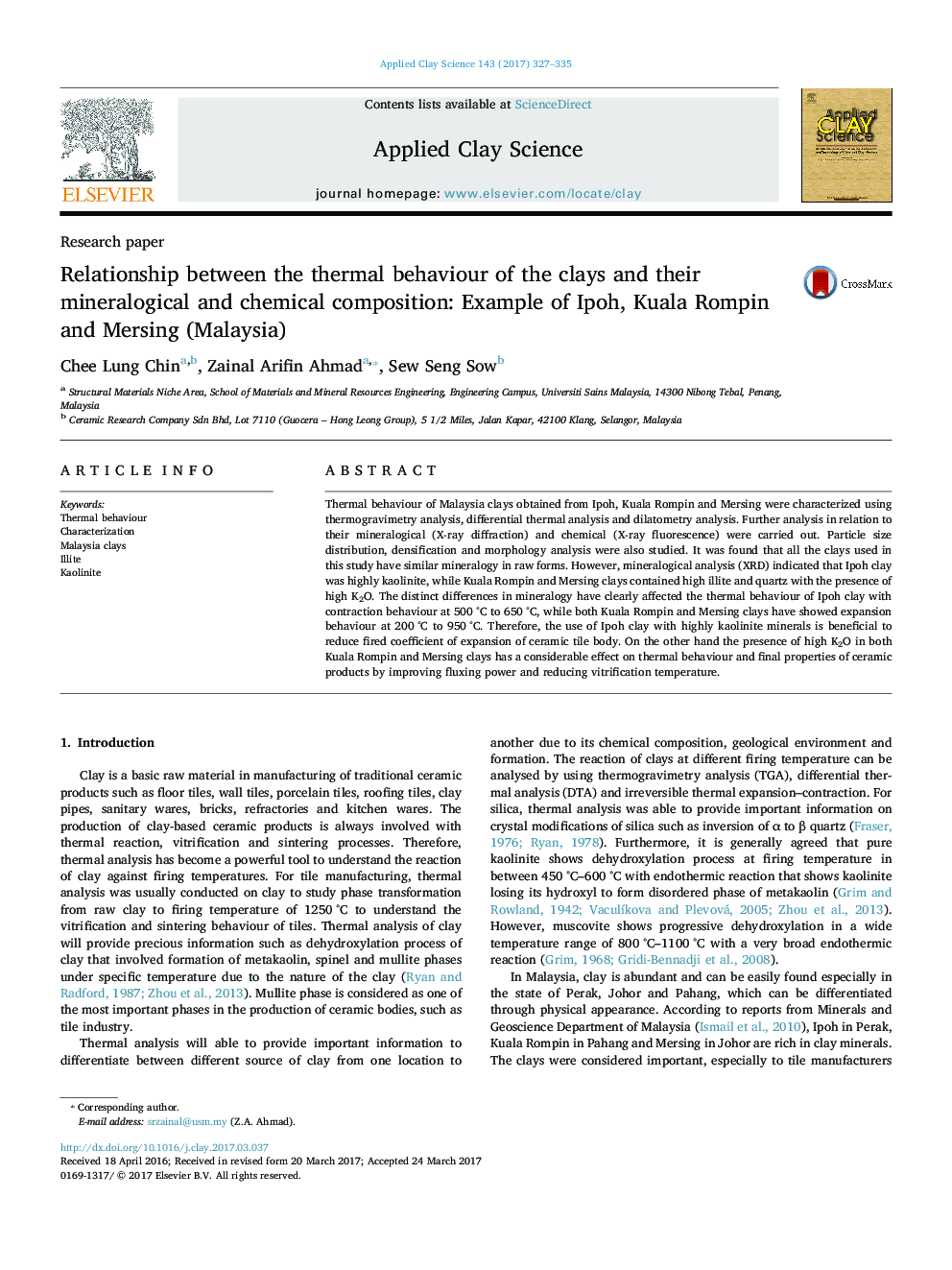| Article ID | Journal | Published Year | Pages | File Type |
|---|---|---|---|---|
| 5468928 | Applied Clay Science | 2017 | 9 Pages |
Abstract
Thermal behaviour of Malaysia clays obtained from Ipoh, Kuala Rompin and Mersing were characterized using thermogravimetry analysis, differential thermal analysis and dilatometry analysis. Further analysis in relation to their mineralogical (X-ray diffraction) and chemical (X-ray fluorescence) were carried out. Particle size distribution, densification and morphology analysis were also studied. It was found that all the clays used in this study have similar mineralogy in raw forms. However, mineralogical analysis (XRD) indicated that Ipoh clay was highly kaolinite, while Kuala Rompin and Mersing clays contained high illite and quartz with the presence of high K2O. The distinct differences in mineralogy have clearly affected the thermal behaviour of Ipoh clay with contraction behaviour at 500 °C to 650 °C, while both Kuala Rompin and Mersing clays have showed expansion behaviour at 200 °C to 950 °C. Therefore, the use of Ipoh clay with highly kaolinite minerals is beneficial to reduce fired coefficient of expansion of ceramic tile body. On the other hand the presence of high K2O in both Kuala Rompin and Mersing clays has a considerable effect on thermal behaviour and final properties of ceramic products by improving fluxing power and reducing vitrification temperature.
Related Topics
Physical Sciences and Engineering
Earth and Planetary Sciences
Geochemistry and Petrology
Authors
Chee Lung Chin, Zainal Arifin Ahmad, Sew Seng Sow,
